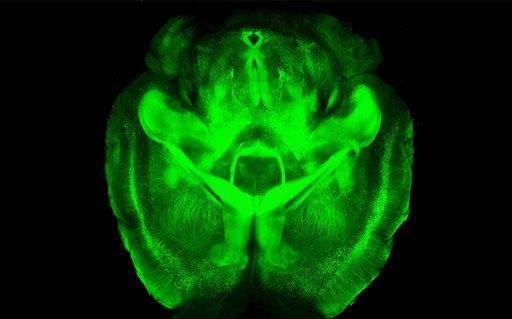A newly discovered chemical treatment makes mouse brains transparent.
The treatment is being hailed as a way to open up new research and view the brain as never before.
“This is probably one of the most important advances for doing neuroanatomy in decades,” said Thomas Insel in a statement. Insel is director of the US National Institute of Mental Health in Bethesda, Maryland, which funded part of the work.
“What these guys have done is just stupendous,” said Dr. Bernardo Sabatini of Harvard Medical School. “You can just peer into the brain” and get “incredible” images, he said.
Brain anatomy will be sped up by 10 to 100 times, according to Terry Sejnowski of the Salk Institute.
The new method is called CLARITY, and uses the detergent SDS, which strips away lipids that normally block the passage of light. Similar methods have been tried in the past, but have failed to keep the brain in a totally intact state for viewing.
To create transparent mouse brains, the Deisseroth team had to remove the fat that provides structure but also blocks light. The first step was to soak the brain in chemicals that would get inside and form a mesh. Once that mesh was in place to support the tissue, the scientists washed out the fat. The result: a see-through brain.
The group led by Karl Deisseroth and his team at Stanford University of California used the chemical compound Acrylamide, infusing it into the brain to bind biomolecules. Now, the brain-hydrogel hybrid shows only a eight percent protein loss, compared to 41 percent previously.
Francis Benes, director of the Harvard Brain Tissue Resource Center at McLean Hospital in Belmont, Massachusetts, said that while more tests are needed, CLARITY could be the beginning of studies on healthy brain wiring, brain disorders, and aging.
“Researchers could, for example, compare circuitry in banked tissue from people with neurological diseases and from controls whose brains were healthy,” according to the journal Nature, which published the study. “Such studies in living people are impossible, because most neuron-tracing methods require genetic engineering or injection of dye in living animals.”
The Associated Press contributed to this report






Friends Read Free